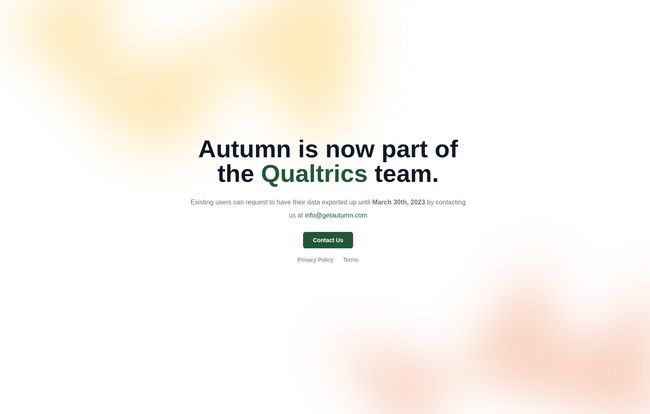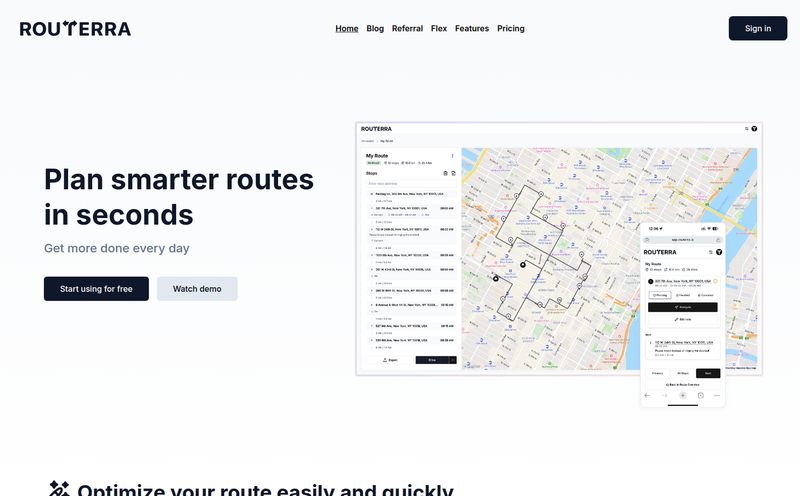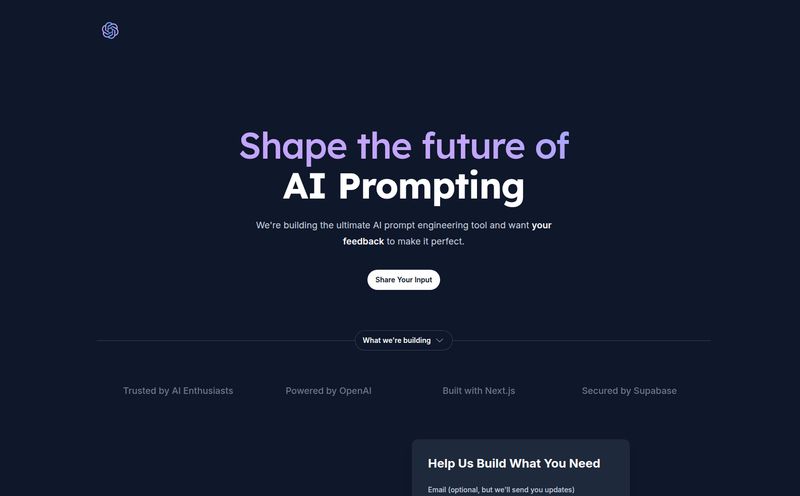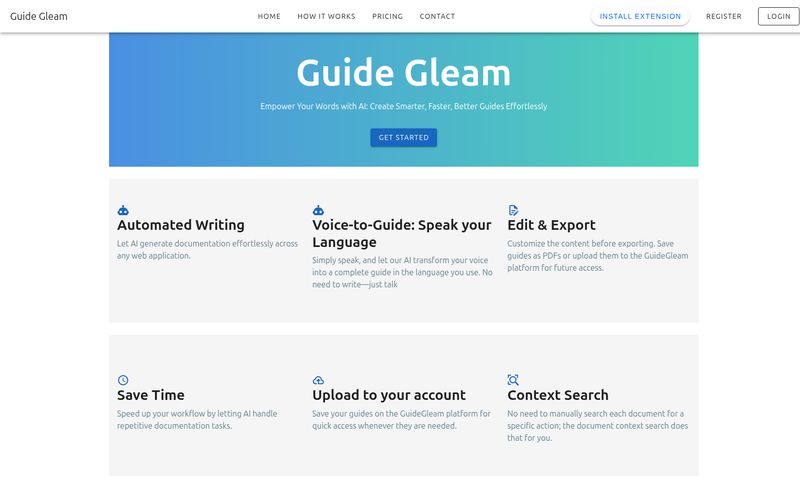You know the feeling. The Sunday Scaries start creeping in around 3 PM. Your meeting schedule looks like a game of Tetris gone horribly wrong, and the idea of one more "quick sync" makes you want to throw your laptop into the sea. We’ve all been there. Burnout is a beast. For years, the corporate world’s answer has been the annual (or quarterly, if you're lucky) employee satisfaction survey. A digital checklist of sterile questions that, more often than not, feels like shouting into a void.
But what if a tool could see the smoke before the fire? What if it could spot the signs of burnout before you even had a name for that feeling of dread? A few years back, a platform called Autumn made exactly that promise. And honestly, it had me and a lot of other folks in the industry pretty excited.
It was a genuinely fresh take on a problem that's only gotten worse. Instead of asking people if they were burned out, Autumn decided to just... look at the data. A bold move. But now, if you go looking for them, you’ll be met with a 404 page or a simple message: they've been acquired. So, what was Autumn, why did it disappear, and what can its story teach us about the future of work?
What Was Autumn, Anyway? The Dream of No More Surveys
At its heart, Autumn was an AI-powered platform designed to measure and—more importantly—prevent team burnout. The big hook? No surveys. None. Zip. Nada. I can't stress how revolutionary that concept was. Instead of adding another task to an already-overwhelmed team's plate, Autumn integrated directly into the tools they were already using. Think Slack, Google Calendar, and the like.
It acted like a smart, silent observer, a digital canary in the coal mine for team well-being. By analyzing anonymized, aggregated communication and collaboration patterns, it could pick up on the subtle, almost invisible, shifts that signal a team is heading for trouble.
It's a concept that makes so much sense when you think about it. Burnout isn't a sudden event; it's a slow erosion. It’s death by a thousand paper cuts, or in this case, a thousand late-night Slack messages.
An AI That Understood Work-Life Bleed
So what was this AI actually looking for? It wasn't reading your private DMs, despite what you might be thinking. It was focused on metadata patterns that are surprisingly telling:
- Meeting Overload: A sudden spike in the number of meetings, especially with little focus time in between.
- Disappearing 1:1s: A drop in the frequency of one-on-one meetings between managers and their reports. This is a huge red flag for team connection.
- The Weekend Creep: An increase in messages sent on Saturdays and Sundays. We've all done it, but when it becomes a team-wide habit, it's a symptom of a larger issue.
- After-Hours Activity: A general rise in work being done outside of standard business hours.
By flagging these trends, Autumn could give managers a heads-up that their team's 'well-being score' was dipping. But it didn't just point out problems; it tried to offer solutions.

Visit Autumn
More Than Just a Warning Light
This is the part that I think was truly brilliant. A dashboard of red flags is just another source of anxiety. Autumn aimed to be actionable. For instance, it would provide managers with tailored, thoughtful question prompts for their next 1:1. Not just "How's it going?" but things designed to open up real conversation based on the team's specific challenges.
It also delivered weekly team insights directly into a manager's Slack, offering a gentle nudge and a summary of how things were trending. It was all about fostering connection and encouraging the small, consistent habits that build resilient, healthy teams. In my experience, it’s those micro-actions, not the grand, sweeping corporate initiatives, that actually make a difference.
The Inevitable "But..."
Of course, no tool is perfect. The concept was fantastic, but it walked a very fine line. The most obvious concern was privacy. Even if the data is anonymized and aggregated, the idea of an AI monitoring team communication can feel a bit... dystopian. It requires a massive amount of trust between employees and leadership, something that isn't always a given.
There was also the fact that its insights were only as good as the data it had access to. If a team did most of its critical communication verbally or on a platform Autumn didn't support, the picture would be incomplete. And, for a long time, information on their pricing and specific feature tiers was pretty scarce, making it hard for smaller companies to know if it was even an option for them.
So, Where Did Autumn Go? The Qualtrics Twist
This brings us to the main event. If you try to visit getautumn.com today, you’ll see a simple landing page. Autumn is now part of the Qualtrics team.
And it makes perfect sense. Qualtrics is an absolute giant in the world of experience management (XM). They are the kings of the survey, the masters of feedback, from customer sentiment to, you guessed it, employee experience. Acquiring Autumn wasn't just about buying a competitor; it was about buying a completely different, proactive methodology.
Qualtrics saw the writing on the wall: people are tired of surveys. The future of employee experience isn't just about asking people how they feel; it's about understanding the digital environment they work in and identifying friction points before they become full-blown crises. The AI and the passive data-gathering engine built by Autumn was a perfect puzzle piece for Qualtrics' massive EmployeeXM™ platform.
The acquisition, which happened back in 2022, meant the end of Autumn as a standalone product. As the notice on their site stated, users had until March 30th, 2023, to export their data. After that... c'est la vie. The ghost in the machine was absorbed into a much larger machine.
What the Story of Autumn Means for the Rest of Us
The rise and absorption of Autumn is more than just tech startup gossip. It’s a barometer for the entire HR tech and team management space. It confirms a trend I've been watching for years: the shift from reactive problem-solving to proactive well-being management.
Companies are slowly realizing that burnout isn't a personal failing; it's an organizational one. And they're willing to invest in tools that help them fix their own systemic issues. Autumn's legacy isn't its defunct website; it's the integration of its forward-thinking ideas into a platform used by thousands of the world's biggest companies. It proved the concept was valuable enough for a titan like Qualtrics to want it.
For managers and team leads, it’s a reminder that the data is all around us. You don't need a fancy AI to notice if your team is suddenly swamped with meetings or if your 1:1s keep getting canceled. Autumn's methodology is something we can all learn from. Pay attention to the patterns. Check in with your people. Don't wait for a survey to tell you something is wrong.
Frequently Asked Questions About Autumn
- What was the Autumn platform?
- Autumn was a software platform that used AI to analyze team communication and collaboration data (from tools like Slack and Google Calendar) to proactively detect early signs of employee burnout without using surveys.
- How did Autumn detect burnout?
- It looked at anonymized metadata patterns, such as an increase in meeting frequency, a decrease in 1:1 meetings between managers and employees, and a rise in messages being sent after hours or on weekends.
- Why can't I access the Autumn website anymore?
- The company Autumn was acquired by Qualtrics, a large experience management company, in 2022. The standalone Autumn product was discontinued, and its technology and team were integrated into Qualtrics's employee experience offerings.
- Was Autumn a free tool?
- Autumn's pricing was never widely publicized, which suggests it was likely sold with custom enterprise-level pricing. There was no clear information about a free tier when the product was active.
- What are some current alternatives to Autumn?
- While Autumn's exact model was unique, other tools operate in the employee well-being and analytics space. Platforms like Culture Amp and Lattice focus on engagement and performance (often with surveys), while tools like Timeular or Reclaim.ai focus more on calendar management and focus time, which indirectly tackles a cause of burnout.
A Final Thought
It’s a bit sad to see a cool, innovative tool get swallowed up, but it's also a sign of success. The story of Autumn is a fantastic case study in building something so good that a market leader decides they’d rather buy you than compete with you. While we can no longer sign up for Autumn, its ghost lives on, pushing the conversation about mental health and burnout at work in a more proactive, data-informed, and ultimately more human direction. And that's a win for everyone.
References and Sources
- Qualtrics Official Website: https://www.qualtrics.com/
- Culture Amp: https://www.cultureamp.com/
- Lattice: https://lattice.com/
- Reclaim.ai: https://www.reclaim.ai/
- Timeular: https://timeular.com/



